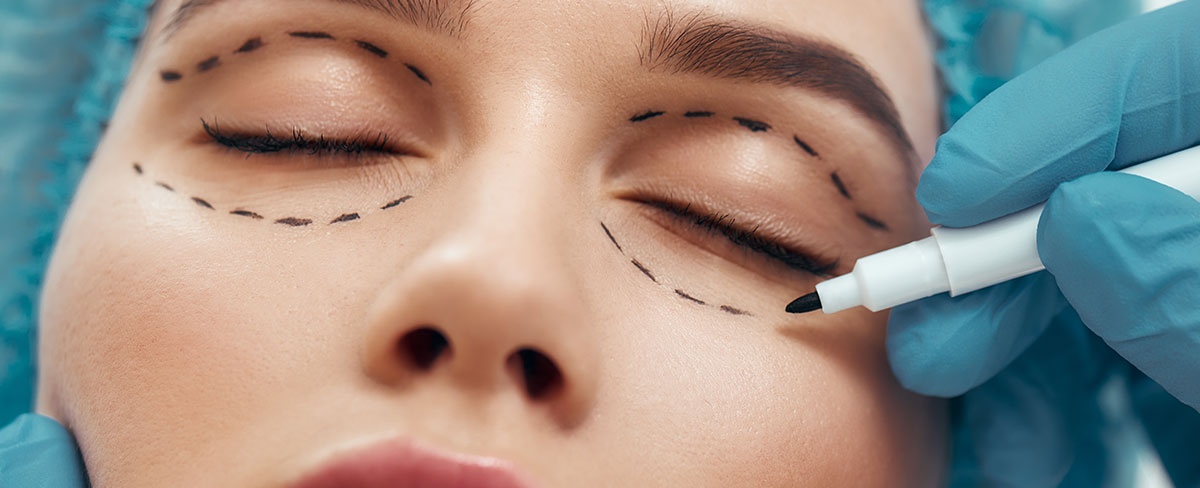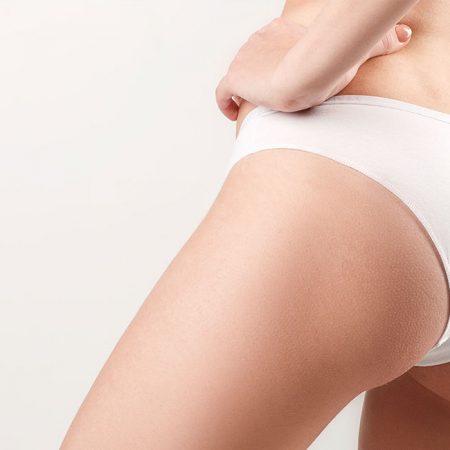To create a more voluptuous bottom, a fat transfer can be performed, removing fat from unwanted places and relocated them to the buttocks. The procedure is also known as a Brazilian Butt Lift and it is an answer to a woman’s desire to have curved and rounded buttocks. Fat transfer is performed under general or possibly local anesthesia and is becoming increasingly popular among plastic surgery procedures.
Where is the Fat Taken From?
The most important requirement for fat transfer to the buttocks is to have enough fat in other areas to relocate it to the buttocks. The most common areas for donor sites are the thighs, hips and abdomen. You must also be in good health and have no history of bleeding disorders. If you have chronic inflammatory conditions or cannot tolerate general anesthesia, you would be a poor candidate for fat transfer to the buttocks. You also can’t take anti-inflammatory medication or aspirin a week before the procedure because this can cause excessive bleeding. You should quit smoking a month before the procedure is scheduled.
Before the procedure begins, the doctor needs photos of the buttocks and some idea of what you are looking for. If you have very flat buttocks, a lot of fat will have to be transplanted from other body areas. Less will be needed if you just need a touchup.
Liposuction to Collect the Fat
The procedure begins by taking fat via liposuction from other body areas as noted above. The fat is taken to the laboratory and centrifuged. The centrifuge removes the broken fat cells, connective tissue and red blood cells, leaving behind only pristine, whole fat cells. These cells are put into syringes with small needles and the syringes are lined up in the operating room.
In very small boluses, the fat is injected deep into the buttocks. Additional boluses are injected just above the first bolus layer, and added to create the height differential between the line of boluses and surrounding tissue.
The Fat Injection Process
In a grid pattern, the boluses are injected gradually into the skin so that the buttocks appear larger and more lifted. The reason small boluses are used instead of large collections of natural fat is that the bolus needs to establish a blood supply. Only if the bolus is really small can a blood supply become attached to the new transplanted tissue. Otherwise a process known as “fat necrosis” occurs. Because fat is being transferred into fat, the degree of fat necrosis is less than it would be if you put fat in areas that normally do not contain fat.
It is recommended that you refrain from sitting for at least a week or two after the procedure to prevent shifting of transferred fat. More fat is injected into the buttocks than is really necessary because some fat will be resorbed and lost after the procedure is over. You can return to work within a couple of weeks and will be able to enjoy the results of a beautiful procedure.
Fat transfer is a process that has over time, become perfected so that it is a viable way to enlarge or contour a body part. Fat transfer to buttock is one of those procedures that, if done right, can shape the buttock and enlarge it. Larger buttocks have become all the rage, with stars like Jennifer Lopez and Lil’ Kim having buttocks that are considered sexy. One can certainly get a buttock implant for changing the size and shape of the buttocks but for some, it is uncomfortable to sit on and is not a natural process, like fat transfer to buttock is.
The Fat Transfer to Buttocks Surgery
The process of transferring fat to the buttocks involves first a liposuction procedure. You have to have enough fat on the thighs, hips or abdomen to be able to do the buttock procedure. The liposuction takes just enough fat for the buttocks and contours the area where the fat was removed from. Then the fat is taken to the laboratory where broken cells, connective tissue, and red blood cells are removed and a buttery looking pure fat collection is the result. The fat cells are loaded into syringes. The surgeon takes a syringe and deposits a small bolus of fat into the deeper portion of the buttock. More small boluses are injected on top of the first one in a line. Then another point on a grid is selected and the same thing is done over again. Hundreds of fat boluses are put into the buttock. The fat transfer to buttock can take several hours.
The reason that fat transfer to buttock is done using small boluses is that each bolus needs to establish a blood supply. If the bolus is too big, it won’t establish an effective blood supply and a process of fat necrosis occurs. This means loss of fat and loss of volume of the buttocks. The smaller the bolus, the better the chance of getting a good blood supply. The boluses are injected to give the appearance of a lifted buttock. More fat is injected into the upper part of the buttock so it looks higher and the appearance of sagging is less.
Fat can be injected into the midportion of the buttock to increase the overall size of the buttock. More fat is injected into the buttock than is needed for the right size. This is because some degree of fat necrosis is expected and some fat cells will be absorbed. The actual result you see doesn’t take place for several weeks. About 30-35 percent of people will need to have additional surgery in order to make up for lost fat due to fat necrosis. Once this is done, usually the person is happy with the result of the fat transfer to buttock and the person needs no further surgery. You can’t sit down for about a week to ten days after the surgery so it doesn’t shift the fat around. After that, the fat will be stable and you can sit down without worry.
Where does the fat come from?
Through liposuction, fat is taken from other parts of the body, such as the back, thighs or stomach, and transferred to the buttocks area. Many people prefer this method to implants because the results feel more authentic, as the fat that is used is the patient’s own body fat.
Dr. Michael Anthony Pasquale at his Honolulu Hawaii Clinic uses a small cannula to extract fat from one area of the body, then places that fat into the buttock region through another cannula. This technique uses your own body’s fat to improve appearance greatly reducing chance of infection or reaction to an implant. This is especially effective in adding shape and contour. Great for filling defects. This technique is effective for those who simply want a few areas filled in, as opposed to a full implant. Additionally, this procedure is very safe since it uses your own body’s fat. The technique is performed as an outpatient procedure.
Fat Injection to Buttocks Complications
Infection and bleeding are major risks. Also, while the patient will have a rounder, fuller, buttock region instantly, the fat re-injected into the buttocks may shrink as much as 40% in the next year as it is reabsorbed into the body. This fat reabsorption may produce asymmetry if one side of the buttocks absorbs more than the other, making the results of this procedure difficult to predict precisely.
Fat Transfer Recovery
Recovery period is significantly longer and more painful than the expected period for a breast augmentation procedure, as the buttocks region of the body is involved in physical activity such as walking, running and even standing. The patient can also expect to not be able to sit or sleep on their backs during the first few weeks without pain, and may require some help getting dressed. The pain can be controlled by medication. The patient can expect some bruising and swelling in the buttock area during recovery, which may spread up to the abdominal or thigh area. This is normal and will begin to subside after a few days or weeks.







